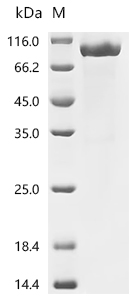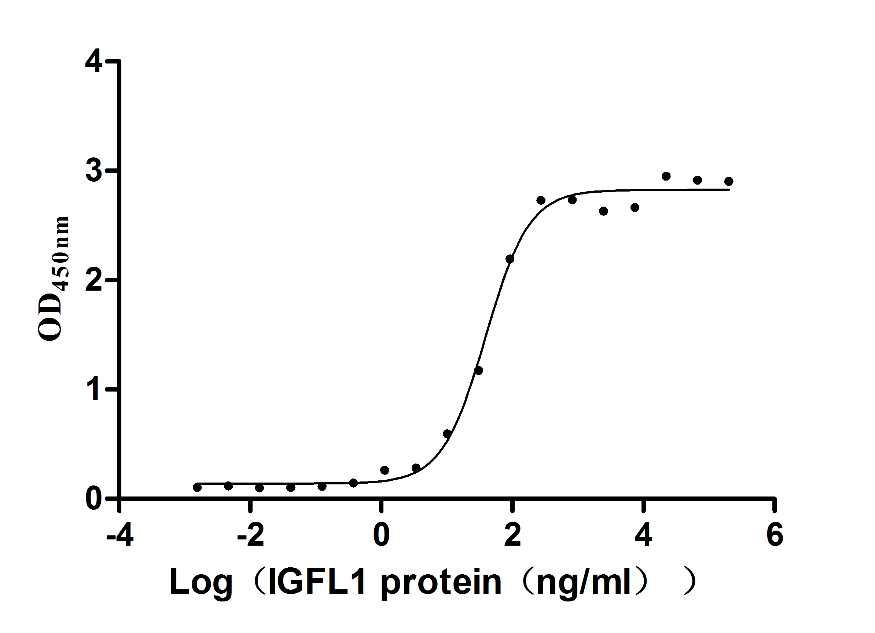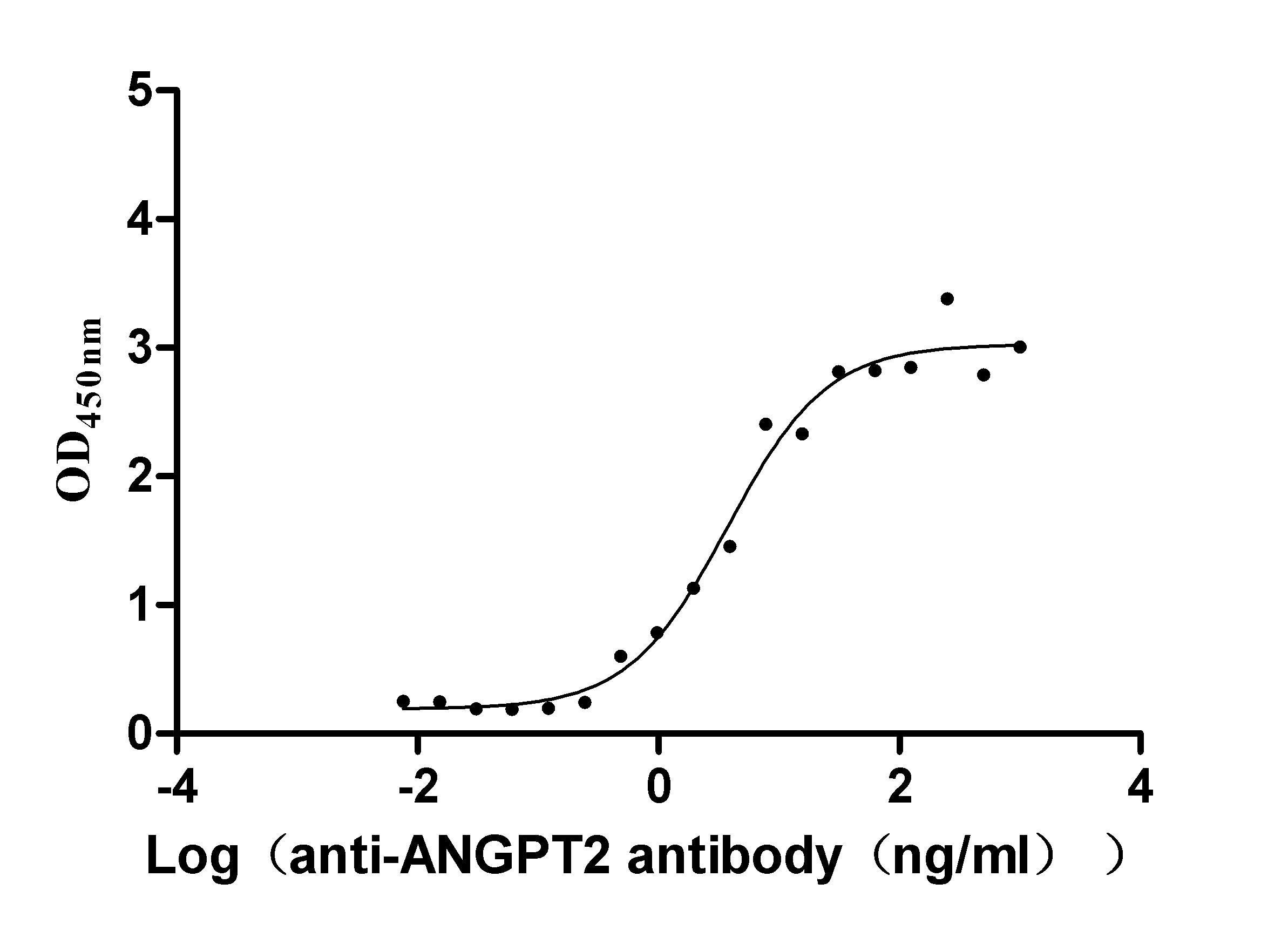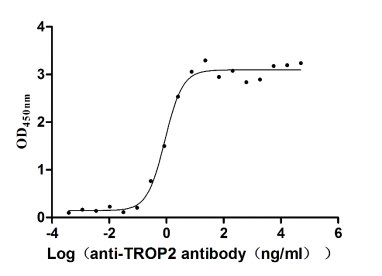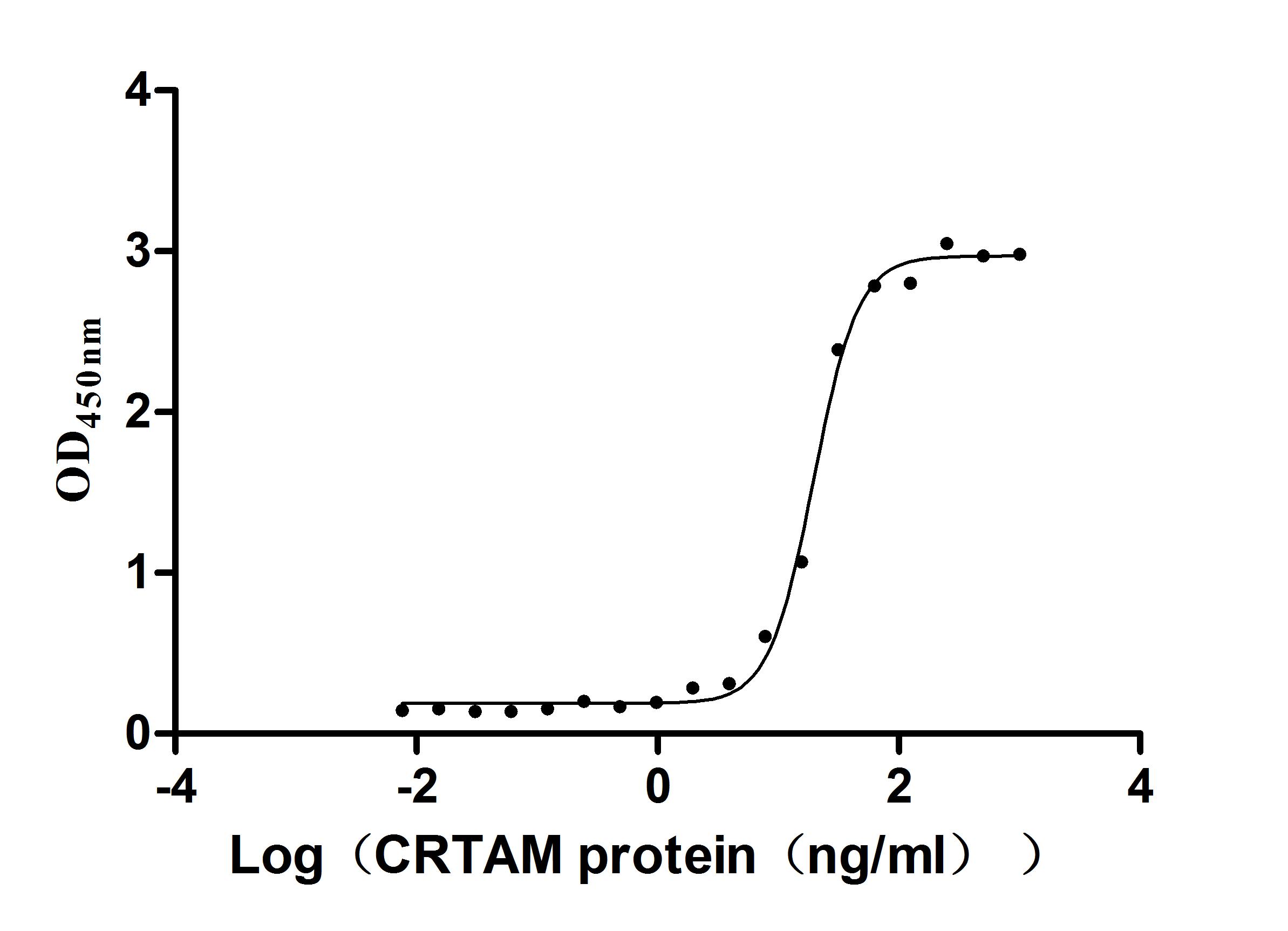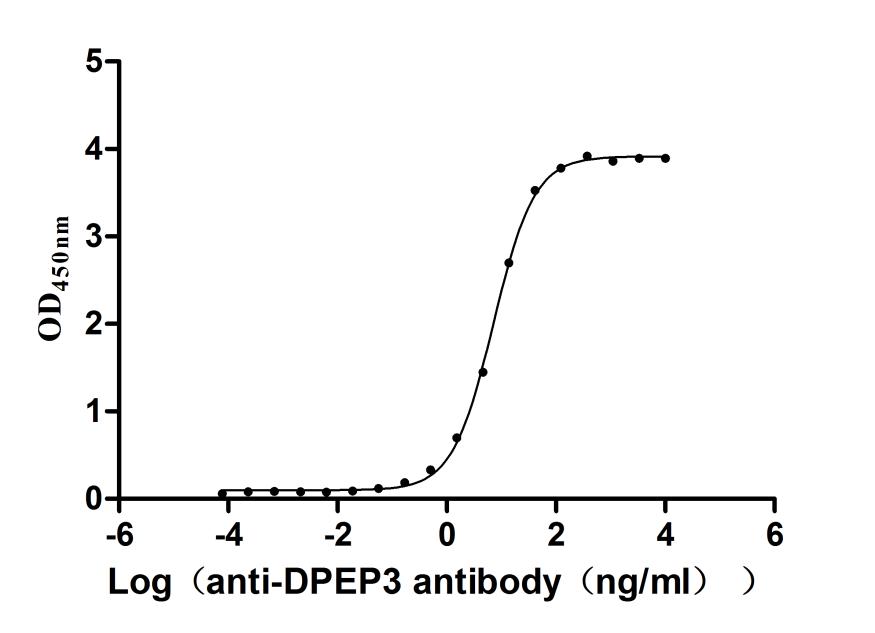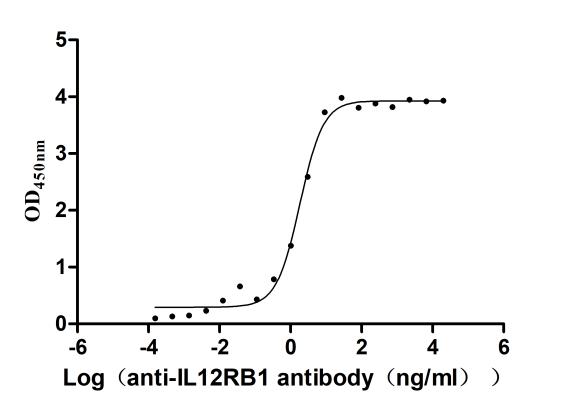Recombinant Mouse Muscle, skeletal receptor tyrosine-protein kinase (Musk), partial
-
中文名称:Recombinant Mouse Muscle, skeletal receptor tyrosine-protein kinase (Musk), partial
-
货号:CSB-MP730715MO
-
规格:¥1536
-
图片:
-
其他:
产品详情
-
纯度:Greater than 95% as determined by SDS-PAGE.
-
生物活性:Not Test
-
基因名:Musk
-
Uniprot No.:
-
别名:Muscle-specific tyrosine-protein kinase receptor
-
蛋白长度:Partial
-
来源:Mammalian cell
-
分子量:80.8 kDa
-
表达区域:22-494aa
-
氨基酸序列EKLPKAPVITTPLETVDALVEEVATFMCAVESYPQPEISWTRNKILIKLFDTRYSIRENGQLLTILSVEDSDDGIYCCIANNGVGGAVESCGALQVKMKPKITRPPINVKIIEGLKAVLPCTTMGNPKPSVSWIKGDNALRENSRIAVLESGSLRIHNVQKEDAGQYRCVAKNSLGTAYSKLVKLEVEVFARILRAPESHNVTFGSFVTLRCTAIGIPVPTISWIENGNAVSSGSIQESVKDRVIDSRLQLFITKPGLYTCIATNKHGEKFSTAKAAATVSIAEWSKSQKDSQGYCAQYRGEVCDAVLAKDALVFFNTSYRDPEDAQELLIHTAWNELKAVSPLCRPAAEALLCNHLFQECSPGVVPTPMPICREYCLAVKELFCAKEWQAMEGKAHRGLYRSGMHLLPVPECSKLPSMHRDPTACTRLPYLDYKKENITTFPSITSSRPSADIPNLPASTSSFAVSPAYSMT
Note: The complete sequence including tag sequence, target protein sequence and linker sequence could be provided upon request. -
蛋白标签:C-terminal hFc-tagged
-
产品提供形式:Liquid or Lyophilized powder
Note: We will preferentially ship the format that we have in stock, however, if you have any special requirement for the format, please remark your requirement when placing the order, we will prepare according to your demand. -
缓冲液:If the delivery form is liquid, the default storage buffer is Tris/PBS-based buffer, 5%-50% glycerol. If the delivery form is lyophilized powder, the buffer before lyophilization is Tris/PBS-based buffer, 6% Trehalose, pH 8.0.
-
复溶:We recommend that this vial be briefly centrifuged prior to opening to bring the contents to the bottom. Please reconstitute protein in deionized sterile water to a concentration of 0.1-1.0 mg/mL.We recommend to add 5-50% of glycerol (final concentration) and aliquot for long-term storage at -20℃/-80℃. Our default final concentration of glycerol is 50%. Customers could use it as reference.
-
储存条件:Store at -20°C/-80°C upon receipt, aliquoting is necessary for mutiple use. Avoid repeated freeze-thaw cycles.
-
保质期:The shelf life is related to many factors, storage state, buffer ingredients, storage temperature and the stability of the protein itself.
Generally, the shelf life of liquid form is 6 months at -20°C/-80°C. The shelf life of lyophilized form is 12 months at -20°C/-80°C. -
货期:Basically, we can dispatch the products out in 1-3 working days after receiving your orders. Delivery time may differ from different purchasing way or location, please kindly consult your local distributors for specific delivery time.Note: All of our proteins are default shipped with normal blue ice packs, if you request to ship with dry ice, please communicate with us in advance and extra fees will be charged.
-
注意事项:Repeated freezing and thawing is not recommended. Store working aliquots at 4℃ for up to one week.
-
Datasheet & COA:Please contact us to get it.
相关产品
靶点详情
-
功能:Receptor tyrosine kinase which plays a central role in the formation and the maintenance of the neuromuscular junction (NMJ), the synapse between the motor neuron and the skeletal muscle. Recruitment of AGRIN by LRP4 to the MUSK signaling complex induces phosphorylation and activation of MUSK, the kinase of the complex. The activation of MUSK in myotubes regulates the formation of NMJs through the regulation of different processes including the specific expression of genes in subsynaptic nuclei, the reorganization of the actin cytoskeleton and the clustering of the acetylcholine receptors (AChR) in the postsynaptic membrane. May regulate AChR phosphorylation and clustering through activation of ABL1 and Src family kinases which in turn regulate MUSK. DVL1 and PAK1 that form a ternary complex with MUSK are also important for MUSK-dependent regulation of AChR clustering. May positively regulate Rho family GTPases through FNTA. Mediates the phosphorylation of FNTA which promotes prenylation, recruitment to membranes and activation of RAC1 a regulator of the actin cytoskeleton and of gene expression. Other effectors of the MUSK signaling include DNAJA3 which functions downstream of MUSK. May also play a role within the central nervous system by mediating cholinergic responses, synaptic plasticity and memory formation.
-
基因功能参考文献:
- Gene expression profiling showed that MuSK was required for the BMP4-induced expression of a subset of genes in myoblasts, including regulator of G protein signaling 4 (Rgs4). PMID: 27601729
- These mice showed only marginal activation of MuSK and died by 3 weeks of age apparently due to an abnormally small number and size of neuromuscular junction (NMJs). PMID: 28069867
- data reveal that muscle skeletal receptor tyrosine kinase cysteine-rich domain is critical for neuromuscular junction formation and plays an unsuspected role in NMJ maintenance in adulthood. PMID: 25810523
- Forced expression of Dok-7 in muscle enhanced MuSK activation in mice lacking agrin or Lrp4 and restored midmuscle NMJ formation in agrin-deficient mice, but not in Lrp4-deficient mice. PMID: 25368159
- pathogenic IgG4 antibodies to MuSK bind to a structural epitope in the first Ig-like domain of MuSK, prevent binding between MuSK and Lrp4, and inhibit Agrin-stimulated MuSK phosphorylation. PMID: 24297891
- MuSK colocalizes with actin and Arf6 at the cell surface and during endosomal trafficking. PMID: 23621612
- Increasing MuSK activity delays denervation and improves motor function in ALS mice. PMID: 22939980
- Two classic synaptic signalling systems (neuregulin-1 and neural agrin) converge upon MuSK to regulate postsynaptic differentiation. PMID: 22328506
- Biglycan binding to MuSK rescues the unstable acetylcholine receptor clusters that are involved in neuromuscular junction formation and postsynaptic differentiation. PMID: 22396407
- Data suggest that adult skeletal muscles harbour different endogenous levels of MuSK and that these levels determine the ability to form ectopic AChR clusters upon overexpression of agrin or MuSK. PMID: 21255125
- Depletion of MuSK at the neuromuscular junction leads to disassembly of muscle-specific kinase and muscle weakness of myasthenia gravis in mice. PMID: 20603331
- Data show that expression of a chimeric receptor containing the juxtamembrane region of Musk and the kinase domain of TrkA restores presynaptic and postsynaptic differentiation in Musk-deficient mice. PMID: 12403715
- Activation of a musk promoter reporter construct in muscle fibers in vivo and in cultured myotubes, using transfection of multiple combinations of expression vectors for potential signaling components PMID: 12756238
- analysis of regulation of MuSK expression by a novel signaling pathway PMID: 12885777
- Our results suggest that muscle tyrosine phosphatases tightly regulate MuSK activation and signaling and support a novel role of Shp2 in MuSK-dependent AChR clustering. PMID: 15737732
- Musk expression was inhibited by CREB interacting with a CRE-like element with MyoD. PMID: 15964791
- Our findings demonstrate that MuSK kinase activity is required throughout postnatal development to hold up MuSK and AChR levels at endplates. PMID: 16337809
- A low-molecular weight isoform of muscle-specific receptor tyrosine kinase in mouse sperm localized in the flagellar mid-piece region of human sperm. PMID: 16487930
- These results demonstrate a novel pathway linking the NO-soluble guanylyl cyclase-cGMP pathway, SR Ca2+ release, PLB, and CaM kinase II to relaxation in gastric fundus smooth muscles. PMID: 16510846
- Dok-7 is essential for neuromuscular synaptogenesis through its interaction with MuSK PMID: 16794080
- muscle-specific receptor tyrosine kinase activation and binding to dystroglycan are regulated by alternative mRNA splicing of agrin PMID: 17012237
- A new member of the Shc family of docking proteins is characterised, which may mediate a specific aspect of signaling downstream of the MuSK receptor. PMID: 17452444
- MuSK controls where motor axons grow and form synapses. PMID: 18084289
- the COOH-terminal NES and Src homology 2 target motifs play key roles in Dok-7/MuSK signaling for neuromuscular synaptogenesis. PMID: 18165682
- The IGg1/2 domain of MuSK is involved in acetylcholine receptor clustering by binding to the muscle surface. PMID: 18253062
- Our study reveals a potentially novel mechanism that regulates agrin/MuSK signaling cascade. PMID: 18272689
- adult musk(V789M/-) mice show severe muscle weakness; diaphragm exhibits pronounced changes in endplate architecture, distribution & innervation; missense mutation V789M in MuSK acts as a hypomorphic mutation & leads to insufficiency in MuSK function PMID: 18718936
- These experiments indicate that Lrp4 is the long-sought and elusive receptor for Agrin and has a critical role in activating MuSK and stimulating neuromuscular synapse formation. PMID: 18848351
显示更多
收起更多
-
亚细胞定位:Cell junction, synapse, postsynaptic cell membrane; Single-pass type I membrane protein. Note=Localizes to the postsynaptic cell membrane of the neuromuscular junction.
-
蛋白家族:Protein kinase superfamily, Tyr protein kinase family
-
组织特异性:Expressed preferentially in skeletal muscle.
-
数据库链接:
Most popular with customers
-
Recombinant Human IGF-like family receptor 1 (IGFLR1), partial (Active)
Express system: Mammalian cell
Species: Homo sapiens (Human)
-
Recombinant Dog Angiopoietin-2 (ANGPT2) (Active)
Express system: Mammalian cell
Species: Canis lupus familiaris (Dog) (Canis familiaris)
-
Recombinant Human Tumor-associated calcium signal transducer 2 (TACSTD2), partial (Active)
Express system: Mammalian cell
Species: Homo sapiens (Human)
-
Recombinant Human Cell adhesion molecule 1 (CADM1), partial (Active)
Express system: Mammalian cell
Species: Homo sapiens (Human)
-
Recombinant Human Dipeptidase 3(DPEP3), partial (Active)
Express system: Mammalian cell
Species: Homo sapiens (Human)
-
Recombinant Human Urokinase-type plasminogen activator(PLAU) (Active)
Express system: Mammalian cell
Species: Homo sapiens (Human)
-
Recombinant Human Interleukin-12 receptor subunit beta-1(IL12RB1),partial (Active)
Express system: Mammalian cell
Species: Homo sapiens (Human)

